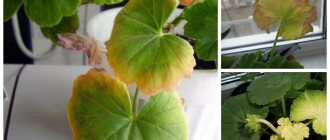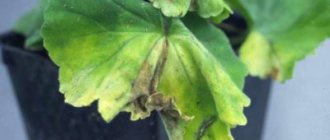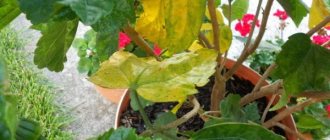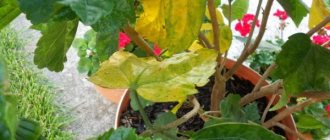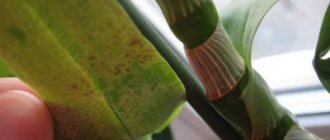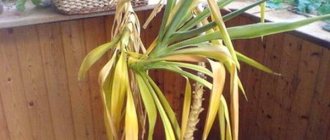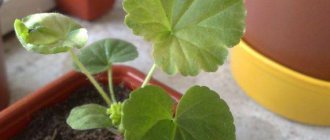Author: Galateya
25 October 2022 13:33
Community: Facts
Tags: geranium soil leaves yellowing watering why prevention temperature
39310
5
Even our grandmothers knew about the healing properties of this unpretentious plant. And bright multi-colored inflorescences help decorate the interior of modern apartments. But it happens that the flower suddenly begins to hurt. What to do when geranium leaves turn yellow and save the plant?
Natural processes
Indoor geranium is short-lived, after 2-5 years it becomes ugly, anti-aging pruning does not help. The owners can only root the cuttings and throw away the old bush with lignified thick shoots and yellow leaves, or leave it for the mother plant.
But even in young pelargoniums, the plates do not live indefinitely; they age, change color and fall off. If this happens gradually, only with the lower leaves, it’s okay. Most often, the bush loses its outdated plates in the fall, with the beginning of the dormant period.
You need to worry and think about what to do when geranium leaves turn yellow and dry en masse, not only at the base of the shoots, but also in the middle part, especially at the top.
Watering errors
Along with improper feeding, this is the most common cause of yellowing of geranium leaves. The culture is more afraid of waterlogging the substrate, but it still needs water, especially during the period of active growth, during flowering.
To check whether the geranium needs to be watered, just stick your index finger into the soil along the first phalanx. Only the tip should feel the moisture. If the substrate does not give in, it means that the plates have begun to turn yellow not because of overflow, but because the soil has become compacted and air is not reaching the roots.
Overdrying of the soil
Geranium leaves turn yellow when the bush receives little water. Plants are 95% liquid; without it, nutrition, photosynthesis, and thermoregulation are impossible.
When geraniums are compared to succulents, they mean that the bush cannot be overwatered. But the crop’s ability to extract water from the air is low. Without regular irrigation, pelargonium leaves sequentially:
- lose turgor;
- turn yellow;
- dry;
- crumble.
Since water is first spent on servicing the leaf apparatus, the flowers fall off prematurely and there are no new buds. At some stage the root dies.
If the owners notice that the leaves of the geranium are drying, and the substrate is also dry, the pot is light, the plant needs to be watered. And be sure to check whether the water wets the soil completely.
Perhaps the flower has dried out so much that liquid seeps through the cracks and immediately falls into the pan. In this case, watering is done by immersion - place the geranium in a bucket of water at room temperature until the earthen ball is saturated.
Overflow
Pelargonium suffers even more from waterlogging. The death of the plant occurs faster than from overdrying, since the root and base of the succulent stem rot.
The first signs are similar to drought - the leaves of pelargonium wither. When yellowing begins, it means that the root is already rotting, it’s too late to save the geranium, you need to take healthy shoots for rooting.
In the initial stages, you can distinguish overwatering from overdrying by simply feeling the surface of the soil. Yellowed leaves do not dry, but soften and rot.
If the soil is wet but the root is still healthy, dry the earthen lump on newspaper and then return it to the pot. At the same time, clean the drainage holes - perhaps they are clogged and excess liquid simply cannot drain into the pan.
Water quality
Geranium turns yellow when the flower is watered with hard water or the concentration of mineral fertilizers is exceeded. The earthen lump becomes salted, not only from above, but from all sides, becomes covered with a whitish crust, and permeability to air and water decreases.
If no action is taken, the leaves continue to turn yellow, the root suffers, and the flower may die. You need to remove the pelargonium from the pot, remove the outer layer of the substrate, and add fresh soil.
It should be taken into account that the salt content in water from a well or well may be higher than in water flowing from a tap. Before watering, the liquid is allowed to settle in an open container for at least a day, then removed from the sediment.
Low air humidity
Geranium needs only periodic irregular spraying. But in hot, dry summers and winters next to a radiator, you shouldn’t be surprised that the tips of the leaves dry out and the surface turns yellow.
Air humidity should be average, at least 50%. It should be increased not by regular spraying, but, for example, by placing bowls of water between pots with plants. In autumn or winter, you can put a wet terry towel on the battery.
If the air in the apartment is dry, spider mites are likely to appear.
Incorrect feeding
A plant disease in which early yellowing and shedding of leaves is observed is called chlorosis. Reason: the formation of chlorophyll is disrupted (among other things, it is responsible for the green color), as a result - a decrease in photosynthesis.
Chlorosis is usually associated with a lack of nutrients. But, before you feed the geranium to prevent the leaves from turning yellow, you need to understand the causes of the disease. Perhaps the fertilizers are simply not absorbed.
External signs of battery shortage:
- nitrogen - the old plates are the first to change color, the shoots begin to stretch;
- iron – the tissues between the veins turn yellow;
- potassium - the vegetative organs dry out at the edges, straw spots appear in the center;
- calcium - the top is the first to suffer, young leaves not only turn yellow, but also become deformed;
- magnesium - on old plates, the edges first become covered with straw spots, then bend and die.
Fertilizers may not be absorbed, even if the substrate contains all the necessary elements. Before fertilizing the bush, you need to eliminate the causes of the problem:
- damage to the root system;
- soil that is too acidic or alkaline;
- poor substrate aeration;
- watering with chlorinated or unsettled water containing a lot of salts;
- exposure to sulfur dioxide, which often happens when geraniums are standing outside - the leaves will turn yellow after acid rain in environmentally unfavorable areas;
- Calcium deficiency occurs only with constant use of filtered water.
Leaves turn yellow if there is an imbalance of nutrients. This usually happens when gardeners do not use complex preparations, but give single-component ones to pelargoniums.
During the period of active growth, bushes need to be fertilized every 2 weeks. If the leaves of a geranium have turned yellow due to the fact that the owners regularly skip feeding the geranium, it is necessary to compensate for the nutritional deficiency.
Pelargonium is simultaneously watered with a solution of complex fertilizers at the root and the crown is treated. Macroelements are absorbed faster through the leaves, and the nutrients are even better. You cannot limit yourself to spraying - nutrients are also removed in a short time.
Another reason for yellowing of geranium leaves is that fertilizing is done with high concentration preparations or on dry soil. The root gets a chemical burn.
Flower growers constantly complain on forums that when feeding geraniums with Fitoverm, the bushes turn yellow. Especially many plates change color and fall off in the Royal Pelargonium.
Leaves turn yellow around the edges
To find out why the plant begins to take on an unhealthy appearance, it is necessary to conduct an external examination. If the edges of the plates begin to dry out and turn yellow, then one of two phenomena is considered to be the factors leading to the appearance of these conditions.
Need for hydration
Insufficient moisture levels develop when the pot is placed above household heaters, near heating devices, or on a windowsill where the sun is often present. These placement patterns are destructive even with frequent heavy watering. An imbalance between placement and oversaturation with moisture leads to yellowing, rotting of the root system and loss of all parts.
Violation of the root system
The edges begin to dry out due to insufficient production of nutrients by the root system, which is not able to ensure the development of the entire plant. It is recommended to replant an indoor flower: the roots are carefully inspected, damaged areas are removed, placed in a manganese solution, and dried before replanting. If the root system does not have significant damage, when replanting it is recommended to choose the right container in accordance with its size.
They curl inward and turn yellow, although it blooms
Inward curling has several different causes. Excess of fertilizers that contain nitrogen. This happens when the main color set occurs. Young shoots are oversaturated with fertilizer elements and curl their leaves, using this method as a defensive reaction. For many gardeners, curling is a sign of pests. The following symptoms indicate the spread of spider mites:
- the appearance of a thin white cobweb;
- almost invisible white coating;
- twisting;
- yellowing.
To get rid of spider mites, use chemical solutions or wipe with soapy water. Many gardeners speak positively about treatment with ammonia or tobacco solutions.
Curling may be a sign of a dangerous fungal infection. In addition to the leaves wrapped in a tube, inflorescences are also affected: they take on an irregular shape. The danger of becoming infected with a fungal disease is that the crane beetle at one of the stages of disease development is capable of infecting nearby pots with other crops. If a viral infection is recognized, it is advised to move the flower to another place or get rid of it completely.
Problems with transplantation
For this reason, geranium leaves turn yellow, as well as due to improper watering or fertilizing. The consequences can be serious, including the death of the plant:
- During replanting, the underground part was damaged.
- Pelargonium is not moved to a new pot for a long time, the root takes up the entire volume, the lump becomes compacted, water and nutrients are less absorbed. The result is that the leaves turn yellow.
- Alkaline or too acidic soil. A dense substrate that does not allow air or water to pass through is not suitable for geraniums.
- Poorly chosen pot. If the container is small, the roots are crowded; in a large container, the plant stops growing and does not bloom until it has entwined a lump. “Free” soil turns sour when watered. The absence of lower holes usually leads to stagnation of water and rotting of the roots.
- After transplanting from a flowerbed to a pot, some of the leaves always die off.
- No drainage. Expanded clay at the bottom of the container not only prevents waterlogging, but also increases aeration.
The treatment is simple - you need to correct the mistakes and replant the pelargonium. The pot is 2-3 cm larger than before, with holes in the bottom. The soil is slightly acidic or neutral, light, permeable. Drainage is required.
What to do to prevent geraniums (pelargonium) from turning yellow: 5 methods for preventing the disease
It is much easier to prevent a problem than to deal with it later. We recommend that you adhere to the following recommendations:
- Provide moderate watering for indoor plants throughout the year.
- Do not water with hard, unsettled, cold tap water.
- Replant the plant every year in a new substrate and a new, slightly larger pot. When replanting, we try to add as much fresh, nutritious soil as possible.
- Periodically remove dry leaves and inspect the plant for diseases and pests.
- Sometimes it is useful to water geraniums with potassium permanganate.
______________________________________________________________________________________________
Incorrect lighting and temperature
In hot weather, geranium leaves turn yellow. It is necessary to increase humidity and ventilation. You can take pelargonium outside or into a loggia and plant it in a balcony box for the summer.
Even a short-term drop in temperature to 0°C or less can cause yellowing and leaf drop.
Geranium loves bright, diffused light; under direct rays the plates turn yellow. The same thing happens in the shade, plus the shoots stretch out. If the bush is too thick, the outer leaves grow normally, the inner ones suffer from lack of light and turn yellow.
Pelargonium care
- The lack of color in winter with healthy leaves can be explained by the increased temperature in the room.
- If watery pads appear on the leaves, this is edema, a non-contagious disease. It appears as a result of abundant watering.
- At the other extreme, insufficient watering also leads to yellowing of the leaves. Watering should be increased.
- Leaves fall, bare stems below indicate a lack of light. Geranium, as mentioned above, is a light-loving plant, and therefore, especially in the winter months, it should be placed on the sunny side.
- A disease such as black leg is manifested by darkening of the stem at the base. This is a contagious disease. The diseased plant must be destroyed. If you want to use the same soil, then it must be sterilized, or better yet, replaced.
- The result of waterlogging can be the appearance of gray mold on the leaves. This contagious disease is caused by the fungus Botrytis. For treatment, the affected leaves are removed, watering is reduced, and the plant is sprayed with a systemic fungicide.
- Geranium can also be affected by pests: aphids, weevils, whiteflies. Bordeaux mixture should be used against them.
Root damage
When the underground part of the geranium ceases to function normally, the leaves are the first to suffer - they turn yellow, dry out or rot, and fall off. If you do nothing, the bush will die.
Most of the reasons why the root of a geranium may suffer when cared for at home have been discussed in other paragraphs. All that remains is to put them together:
- overflow - the lower shoots rot;
- drought - part of the roots dies;
- transplantation with complete or partial replacement of the substrate;
- high concentration of fertilizers;
- fertilizing on dry soil;
- root diseases;
- soil pests.
Preventive measures
So that you do not have to take emergency measures to save your pet, you need to carry out regular preventive measures.
Firstly , do not delay replanting the plant.
Secondly , follow the watering and fertilizing regimes.
Thirdly , let the flower “rest” during the cold season.
Fourth , conduct regular inspections for pests and diseases.
Fifthly, do not create extreme conditions for your pet.
Sixth, don't forget about drainage!
Seventh, do not spray geranium under any circumstances and wipe the leaves with a damp cloth!
